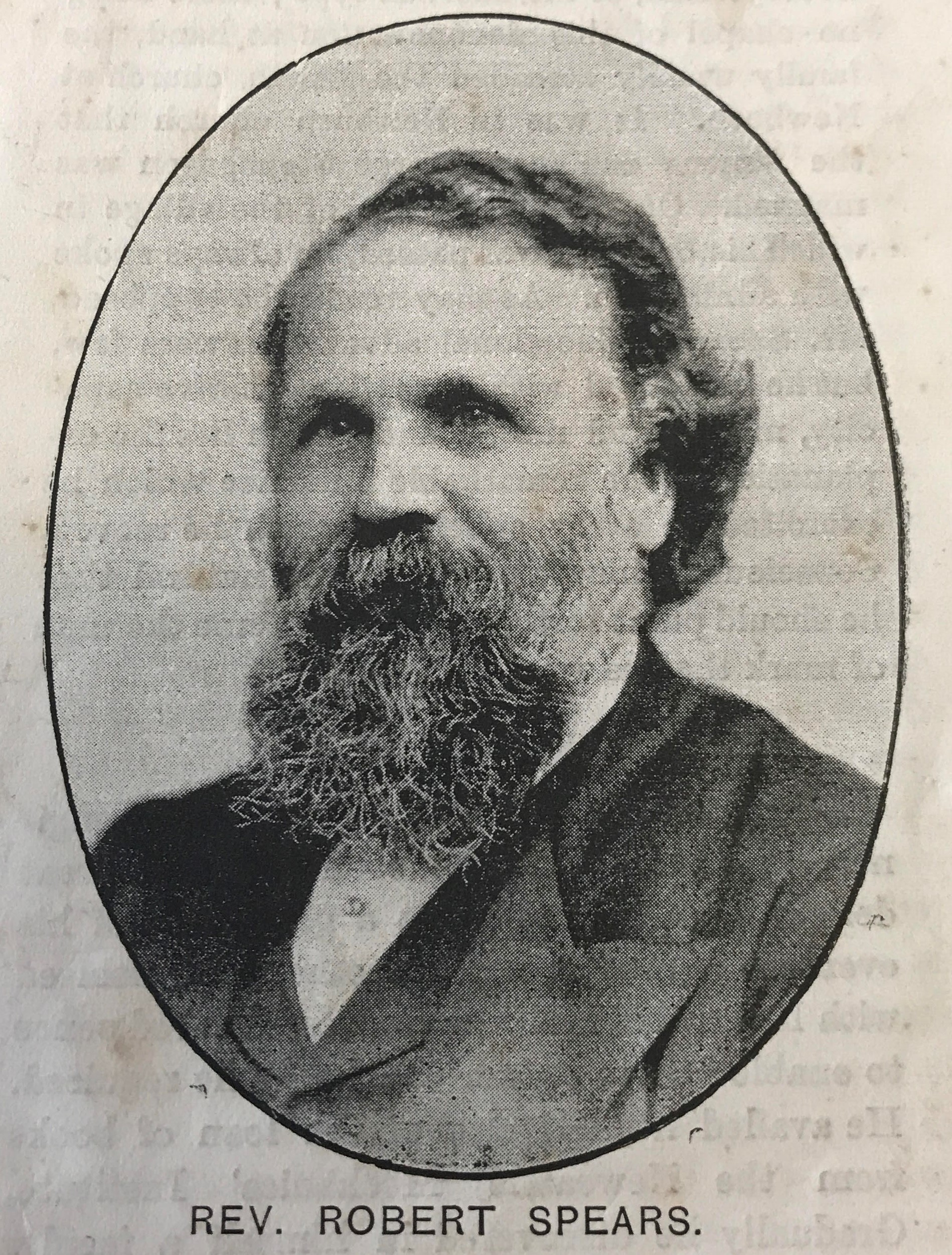Having docked in Tilbury early in the day, Mozoomdar took a train to Freechurch Street (now Fenchurch Street Station) and then spent the next hour or so ambling by carriage to Highgate Hill, home of his longtime friend Reverend Robert Spears.
The Unitarian preacher had hosted Mozoomdar during his visits in 1874 and 1883, but moved to London’s northern suburbs in 1885 to found a girl’s school and a Unitarian church.Note: 38Alan Ruston, “Robert Spears – the Unitarian Dynamo,” Transactions of the Unitarian Historical Society 22, no.1 (1999): 64. PCM described the streets he saw on his way to Highgate as a scene of urban industry populated by shopkeepers, the cries of newspaper boys, crowds of businessmen, omnibuses, horse-drawn carriages, and tram cars “resplendent in painted advertisements from foot-board to coachbox.“Note: 39Mozoomdar, “On the Way to Chicago,” 48-49.
Mozoomdar shared in this spirit of industry. He preached at Spears’ Unitarian church for Sunday-Monday services, and although morning attendance was thin, his evening mass drew a crowd.Note: 40Ibid. In addition, he gave an interview to the Reuter’s Agency, later reproduced in many of the daily and weekly papers, about the Bombay riots that took place from August 11-14.Note: 41These riots were ostensibly caused by Hindu-Muslim disputes over cow-slaughter, and came to be represented as one episode in a series of outbursts of communal violence leading up to Indian Independence. See Jim Masselos, “The City as Represented in Crowd Action: Bombay 1893,” Economic and Political Weekly 28, no.5 (1993): 185. Mozoomdar identified three causes of the riots:
(1) the agitation against cowkilling, (2) the belief among the Mohammedan community of Bombay that the sympathies of the Government are with them as against the Hindoos, and (3) the mixed and lawless character of the Mohammedan populace in Bombay.Note: 42“An Indian Pundit on the Bombay Riots,” The Nottingham Evening Post, August 22, 1893, 4.
Though his characterization of Bombay Muslims may seem at odds with his aspirations for religious confraternity, PCM’s perception of Islam as inherently violent did not prevent him from finding value in it. For example, in a Chicago lecture given three weeks later, Mozoomdar would maintain that Islam, “with fire and sword, proves the almightiness of God’s will.” Note: 43Mozoomdar, Lectures in America, 12.
- Alan Ruston, “Robert Spears – the Unitarian Dynamo,” Transactions of the Unitarian Historical Society 22, no.1 (1999): 64. ↩
- Mozoomdar, “On the Way to Chicago,” 48-49. ↩
- Ibid. ↩
- These riots were ostensibly caused by Hindu-Muslim disputes over cow-slaughter, and came to be represented as one episode in a series of outbursts of communal violence leading up to Indian Independence. See Jim Masselos, “The City as Represented in Crowd Action: Bombay 1893,” Economic and Political Weekly 28, no.5 (1993): 185. ↩
- “An Indian Pundit on the Bombay Riots,” The Nottingham Evening Post, August 22, 1893, 4. ↩
- Mozoomdar, Lectures in America, 12. ↩
